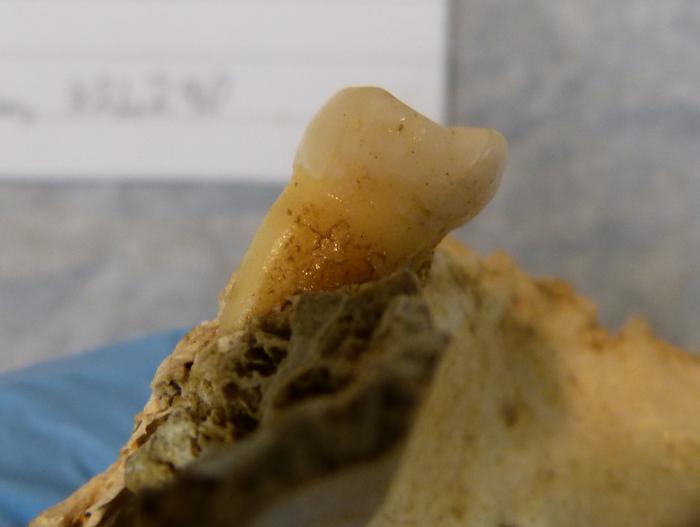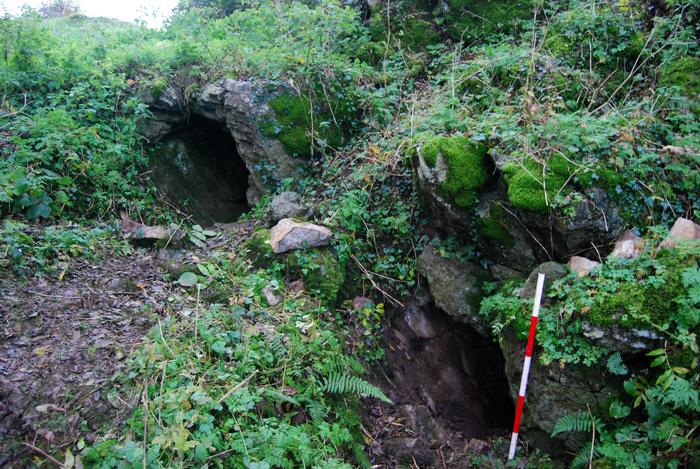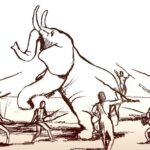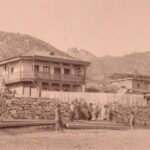What Bronze Age teeth say about the evolution of the human diet
Scientists extract genetic secrets from 4,000-year-old teeth to illuminate the impact of changing human diets over the centuries
A new paper in Molecular Biology and Evolution, published by Oxford University Press, uncovers well-preserved microbiomes from two 4,000 year old teeth in a limestone cave in Ireland. These contained bacteria that cause gum disease, as well as the first high quality ancient genome from S. mutans, an oral bacterium that is one of the major causes of tooth decay. Genetic analyses of these microbiomes reveal major changes in the oral microenvironment from the Bronze Age to today. The teeth both belonged to the same male individual and also provided a snapshot of his oral health.
The study was carried out by Researchers at Trinity College Dublin, in collaboration with archaeologists from the Atlantic Technological University and University of Edinburgh. The authors identified several bacteria linked to gum disease and provided the first high-quality ancient genome of Streptococcus mutans, the major culprit behind tooth decay.
These discoveries allowed the researchers to assess the impact of past dietary changes on the oral microbiome across millennia, including major changes coinciding with the popularization of sugar and industrialization. The teeth, both derived from the same Bronze Age man, also provided a snapshot of oral health in the past, with one tooth showing evidence of microbiome dysbiosis.
Microbial DNA extracted from ancient human teeth can provide information on the evolution of the oral microbiome. How did our ancestors’ mouths differ from our own and why? The excellent preservation of DNA in fossilized dental plaque has made the oral cavity one of the best studied aspects of the ancient human body. However, scientists have retrieved very few full genomes from oral bacteria from prior to the Medieval era. Researchers have limited knowledge about prehistoric bacterial diversity and the relative impact of recent dietary changes compared to ancient ones, such as the spread of farming starting about ten thousand years ago.
S. mutans is the primary cause of dental cavities and very common in oral microbiomes. However, it is exceptionally rare in the ancient genomic record. One reason for its rarity could be its acid-producing nature – this acid causes the tooth to decay but also degrades DNA and prevents plaque from mineralizing. While most ancient oral microbiomes are retrieved from fossilised plaque, this study targeted the tooth directly. The absence of S. mutans DNA in ancient mouths could also reflect less favorable habitats for the species across most of human history. Archaeologists have observed an uptick in dental cavities in skeletal remains following the adoption of cereal agriculture, but cavities become much more common in the Early Modern period, beginning about 1500 AD. A far more dramatic increase has occurred only in the past few hundred years when sugary foods were introduced to the masses.
The sampled teeth were part of a larger skeletal assemblage excavated from Killuragh Cave, County Limerick, by the late Peter Woodman of University College Cork. While other teeth in the cave showed advanced dental decay, no cavities were visible on the sampled teeth. However, one tooth produced an unprecedented amount of S. mutans DNA, a sign of an extreme imbalance in the oral microbial community.
“We were very surprised to see such a large abundance of S. mutans in this 4,000-year-old tooth,” said Dr Lara Cassidy, an assistant professor in Trinity’s School of Genetics and Microbiology, and senior author of the study. “It is a remarkably rare find and suggests this man was at a high risk of developing cavities right before his death.”
The cool, dry, and alkaline conditions of the cave may have contributed to the exceptional preservation of S. mutans DNA, but its high abundance also points to dysbiosis. The researchers found that while S. mutans DNA was plentiful, other streptococcal species were virtually absent from the tooth sample. This implies that the natural balance of the oral biofilm had been upset – mutans had outcompeted the other species leading to a pre-disease state.

The team also found evidence to support the “disappearing microbiome” hypothesis, which proposes modern microbiomes are less diverse than those of our ancestors. This is cause for concern, as biodiversity loss can impact human health. The two Bronze Age teeth produced highly divergent strains of Tannerella forsythia, a bacteria implicated in gum disease.
“The two sampled teeth contained quite divergent strains of T. forsythia” explained Iseult Jackson, a PhD candidate and first author of the study. “These strains from a single ancient mouth were more genetically different from one another than any pair of modern strains in our dataset, despite these modern samples deriving from Europe, Japan, and the USA. This is interesting because a loss of biodiversity can have negative impacts on the oral environment and human health.”
Very few full genomes from oral bacteria have been recovered prior to the Medieval era. By characterising prehistoric diversity, the authors were able to reveal dramatic changes in the oral microenvironment that have happened since.
Dr Cassidy added: “Over the last 750 years, a single lineage of T. forsythia has become dominant worldwide. This is the tell-tale sign of natural selection, where one strain rises rapidly in frequency due to some genetic advantage it holds over the others. T. forsythia strains from the industrial era onwards contain many new genes that help the bacteria colonise the mouth and cause disease.
“S. mutans has also undergone recent lineage expansions and changes in gene content related to pathogenicity. These coincide with humanity’s mass consumption of sugar, although we did find that modern S. mutans populations have remained more diverse, with deep splits in the S. mutans evolutionary tree pre-dating the Killuragh genome.”
The scientists believe this is driven by differences in the evolutionary mechanisms that shape genome diversity in these species.
“S. mutans is very adept at swapping genetic material between strains,” said Dr Cassidy. “This means an advantageous innovation can be spread across S. mutans lineages like a new piece of tech. This ability to easily share innovations may explain why this species retains many diverse lineages without one becoming dominant and replacing all the others.”
In effect, both these disease-causing bacteria have changed dramatically from the Bronze Age to today, but it appears that very recent cultural transitions, such as the consumption of sugar, have had an inordinate impact.

Bibliographic information:
Iseult Jackson, Peter Woodman, Marion Dowd, Linda Fibiger, Lara M Cassidy, Ancient Genomes From Bronze Age Remains Reveal Deep Diversity and Recent Adaptive Episodes for Human Oral Pathobionts, Molecular Biology and Evolution, Volume 41, Issue 3, March 2024, msae017, DOI: https://doi.org/10.1093/molbev/msae017
Press releases from Trinity College Dublin and Oxford University Press.


